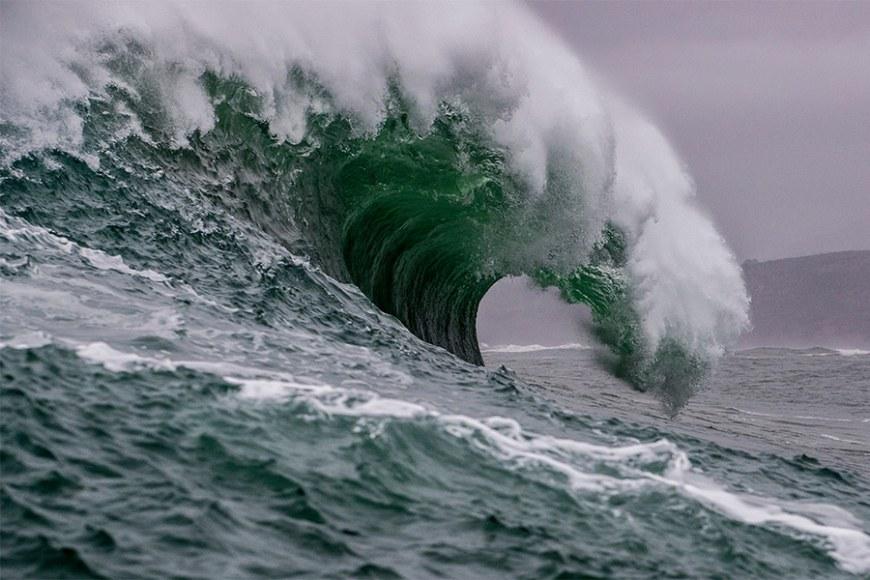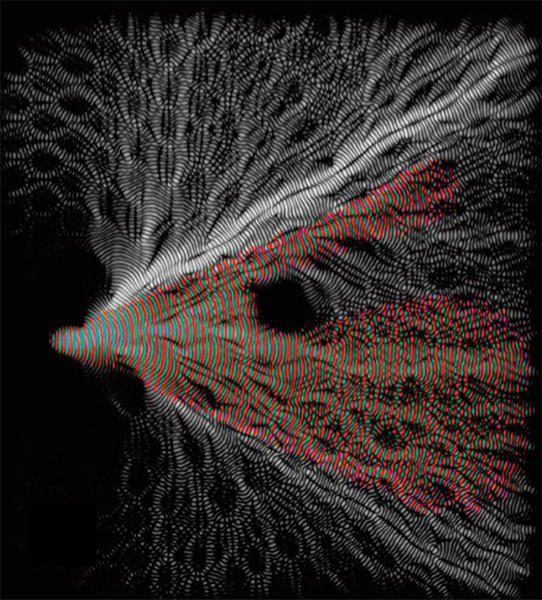Electrons behave as tsunamis – findings hold promise for the discovery of new superconductors

Besides ocean waves, branched flow has been observed with for example microwaves, beams of light shone through a soap bubble, and electrons flowing through a semiconductor. Now a team of physicists from Tampere University, Rey Juan Carlos University and Harvard University has discovered branched flow in a two-dimensional electron lattice.
“This is a breakthrough discovery, because up until now researchers have not expected to see chaotic branched flow in ordered media, such as in solids where atoms are packed in an orderly lattice arrangement,” says Esa Räsänen, professor in the Physics Unit at Tampere University.

The surprising discovery of the international team of researchers sheds light on the branched flow phenomenon and the effects of quantum mechanics on the behaviour of electrons. The findings could open up avenues for the development of technology for controlling branched flows – which have thus far been assumed to be unpredictable – and especially the newly discovered branched electron flows.
Tsunami in Japan wreaked havoc on the other side of the ocean
In 2011 a major earthquake struck off the east coast of Honshu, one of the main islands of Japan, triggering a ten-metre tsunami and claiming the lives of 20,000 people. The devastation was felt as far away as North America and South America. For example, the ports and harbours in California sustained damages totalling 100 million dollars and one person was killed. The destructive waves travelling thousands of miles across the ocean caught the scientific community by surprise.
“One would think that a tsunami uses up its energy as it travels across such a vast distance. Its energy is, in fact, distributed over a large area but what happens is that the energy is not distributed evenly across the ocean but instead forms so-called branched waves. In the individual branches, the energy density can be enormous,” Räsänen describes.
When the earthquake and tsunami hit Japan a decade ago, waves as high as several metres were detected thousands of kilometres from the earthquake’s epicentre.

A branched wave emerges when waves or beams of light scatter as they travel over an uneven surface. Over long distances, the waves deflected numerous times by relatively small perturbations gradually accumulate into a chaotic pattern resembling the branches of a tree.
“As a tsunami travels over the uneven sea floor, the variations in underwater topography will gradually affect the local height of the waves. The local branched waves of the tsunami caused by the 2011 earthquake in Japan wreaked havoc all the way in California,” Räsänen says.
Improved understanding of electron flows could lead to the discovery of new superconductors
The new findings will transform our understanding of the nature of the branched flow phenomenon and the quantum mechanical behaviour of electrons in high energy states in a periodic system, such as graphene.
“The lattice structure, or carbon atoms in the case of graphene, forms the uneven “seabed” that forces the electron wave packets at high energies to bend to bend and merge, like tsunami waves in the Pacific Ocean,” Esa Räsänen describes.
Branched flows that occur in oceans are unpredictable, whereas the electron flows detected in the new study can be manipulated by forming so-called superwires. In superwires, electrons propagate through the entire lattice structure in the desired direction. While this phenomenon is yet to be experimentally verified, it may help to explain, for example, why bilayer graphene was found to exhibit superconductivity in 2018.
“The discovery of the branched flow of electrons may open up ground-breaking applications in the race to find new superconductors among two-dimensional materials, such as graphene and its many derivatives,” Räsänen says.
The team of researchers has recently published the findings in the Proceedings of National Academy of Sciences of the United States (PNAS), the world’s second most cited scientific journal. Read the article Propagation of waves in high Brillouin zones: Chaotic branched flow and stable superwires.
Contact
Esa Räsänen
tel. +358 50 301 3386
esa.rasanen [at] tuni.fi
Text: Esa Räsänen and Anna Aatinen
Images: Unsplash, Eric Heller and National Oceanic and Atmospheric Administration (NOAA)





